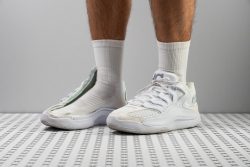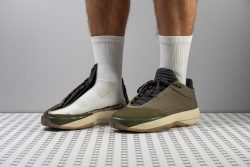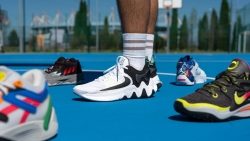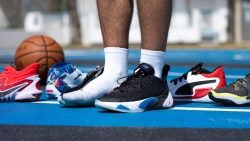3 Basketball Shoes With The Best Traction in 2025
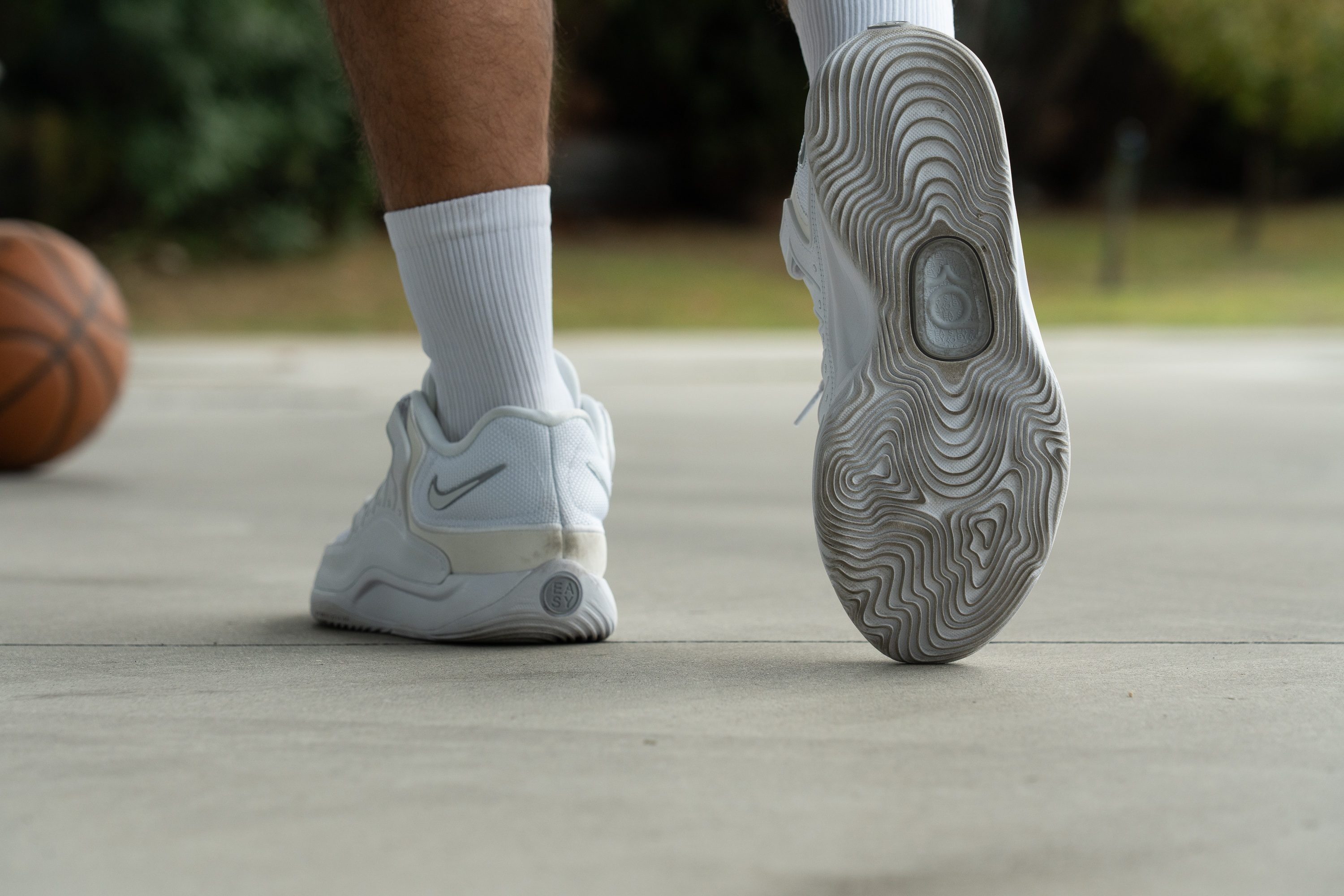
We buy shoes ourselves. We earn commissions when you buy through us, at no extra cost. Why trust us
Seasoned hoopers are well aware that outsole traction is one of the most important parameters of a basketball shoe. It can either make or break your entire on-court performance!
We use a scientifically acclaimed SATRA TM144 grip testing protocol to filter out basketball shoes with the strongest grip for our top pick choices. We also dive into the nitty-gritties of basketball shoe traction in a comprehensive guide below.
How we test Basketball shoes with the traction
Gone are the days when reviewers tested a hoop shoe grip based on how loud a squeak it makes.
Equipped with specialised machinery, professional basketball court flooring (FIBA Level 1), and a SATRA TM144 testing method, we rely on science to test the gripping capacity of each basketball shoe. We also buy each pair ourselves to take brand loyalty out of the equation.
But a great grip doesn’t automatically make a shoe perfect. We also measure dozens of other parameters to provide the most exhaustive reviews and help you make the best purchase.
Best overall basketball shoes with high traction












































What makes it the best?
Pros
- Excellent shock absorption
- Propulsive energy return in the forefoot
- Superb outsole traction
- Solid ankle support and lateral stability
- Secure lockdown and containment
- Comfortable step-in feel
- Good breathability for warm temperatures
- Decent forefoot flexibility
- Promising durability (okay for outdoor courts)
Cons
- Heavier than average
- Not for wide feet
- No major updates from KD 17
Best basketball shoes with high traction and energy return














































What makes it the best?
Pros
- Record-breaking energy return with ZoomX
- Significant improvement in lateral support
- Soft and comfortable step-in feel
- Excellent heel and midfoot containment
- Feels highly agile and nimble
- Fantastic outsole grip
- Lighter than average
Cons
- Below-average shock absorption
- Disappointing durability for the price
- Lacks breathability
Why is shoe traction so important in basketball
It’s hard to overestimate the value of outsole grip in such a dynamic sport. Especially when it comes to quick cuts, direction changes, sprints, and explosive jumps.
This study shows that outsole traction affects basketball performance even more than shoe weight or stiffness. Its participants performed:
- significantly worse in maximal effort sprints, vertical jumps, and a cutting drill when traction was decreased by 20%
- significantly better in the cutting drill when traction was increased by 20%
Another research backed this up for the following moves:
- defensive slides (quicker court contact, stronger side-to-side pushes)
- crossover dribbles (stronger forward pushes)
- full approach jumps (quicker court contact, higher jumps)
However, this study also suggests that an increase in shoe traction after a certain point doesn’t lead to equal improvements in performance. This means that you don’t always have to look for the absolute highest coefficient of friction in a hoop shoe. Sometimes, above-average or merely average scores can be beneficial enough for your playing style.
This brings us to the next point of discussion, which is the danger of having too much traction.
Too much traction is not good either
Let’s imagine an exaggerated situation. Your shoe soles are covered in glue; they stick to the court like no other, and the coefficient of friction is through the roof. But what does that mean for the rest of your body?
1. Increased injury risk: Just because the foot stops moving abruptly doesn’t mean that the rest of your body stops as well. The impulse continues and travels up to your ankles and knees, and sometimes even hips, causing undesirable sprains or even tears in the muscles and tendons.
This is true for both rotational grip (when twisting and moving sideways) and translational, or straight-line, grip (when pushing off).
2. Decreased fluidity of movement: Basketball is not all about cuts and jumps. You also need a decent amount of outsole give to accommodate a tonne of pivots, spins, and slides. Too much grip on the hardwood detracts from the smoothness during these moves.
| When you buy a new pair of hoop shoes, take it slow in the first few games and training sessions. Your body needs to adapt to a sudden increase or decrease in the new shoe’s gripping capacity. |
Testing basketball shoe traction in our lab
To recreate real-life conditions as much as possible, we:
- mount the shoe to a 7-degree wedge (because your foot meets the floor at an angle)
- apply a force of around 500N (to mimic the impact of the player’s body)
After that, our traction testing machine slides the shoe’s forefoot against a piece of basketball court flooring* and records the dynamic coefficient of friction (CoF) it generates. The higher the number, the better the shoe’s grip and, consequently, the stopping power.
*The flooring in question is FIBA (International Basketball Federation) Level 1 approved. It is the highest certification standard, making it suitable for top-level (elite) international competitions, including FIBA World Cups and the Olympic Games.
But we don’t just slide it once. To ensure the most accurate results, we repeat the test 10 times, excluding the very first measurement as well as the biggest outlier that's more than 10% from the mean.
Here is an overview of basketball shoes that received the highest friction coefficients in our lab:
Traction on dusty courts
Not every player has the privilege to play on pristine NBA-level hardwood courts all the time, and dust buildup is a real problem for many beginner and recreational hoopers.
But can you overcome this by choosing basketball shoes with the highest coefficient of friction? Unfortunately, no, that doesn’t solve the problem.
Grippy on clean courts, these shoes cannot guarantee a slip-free experience when dust starts to creep in between the tread lines. In fact, we found that some hoop shoes with average traction outperform their grippier counterparts as their tread patterns prove to be more effective at shedding dust and dirt.
Our experience shows that certain types of rubber and treading can work better on poorly-maintained courts:
What to look for: Hard rubber outsoles with thicker herringbone, wavy, or radial tread patterns.
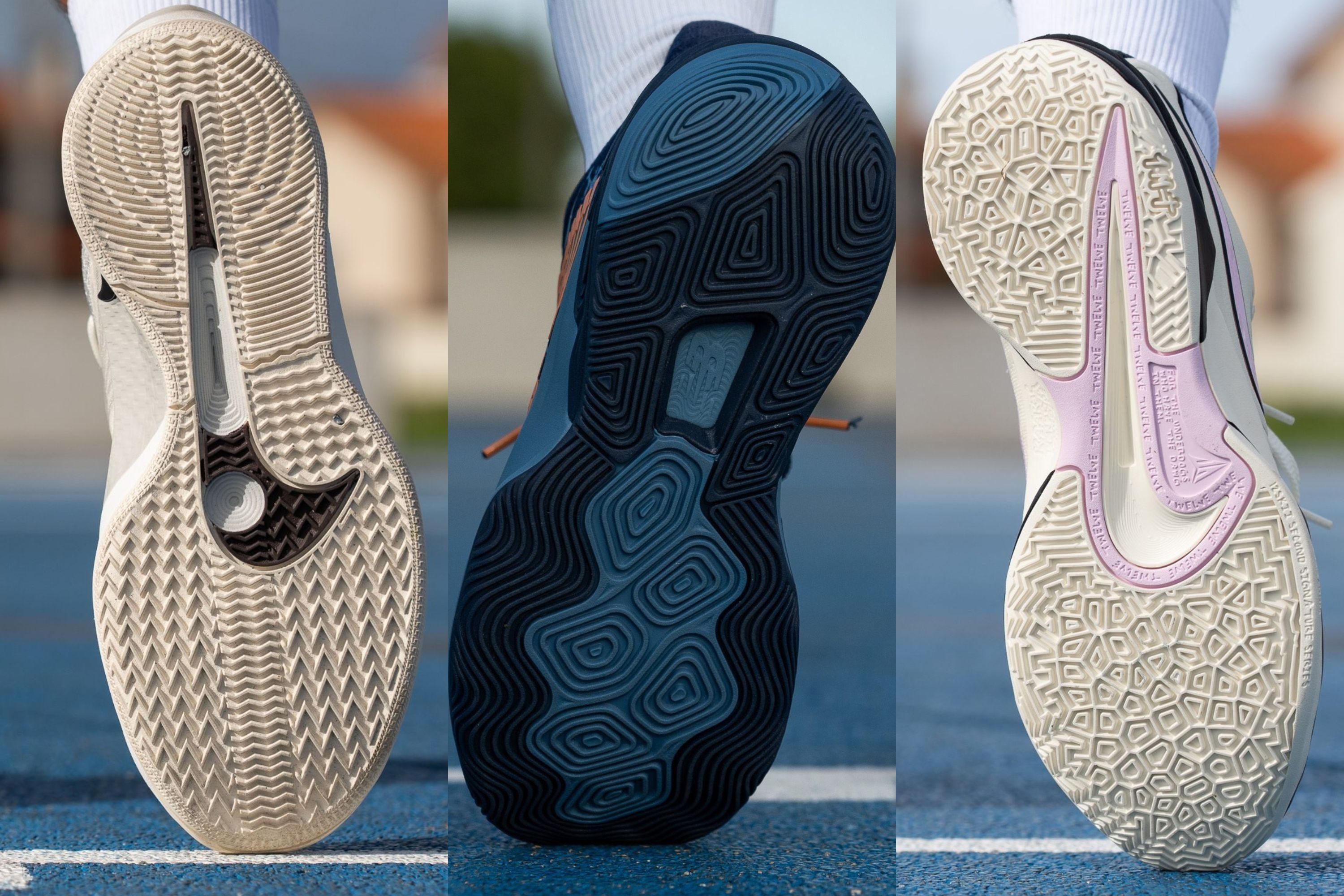
What to avoid: Soft rubber outsoles with thin and densely packed tread lines (these tend to get clogged faster).
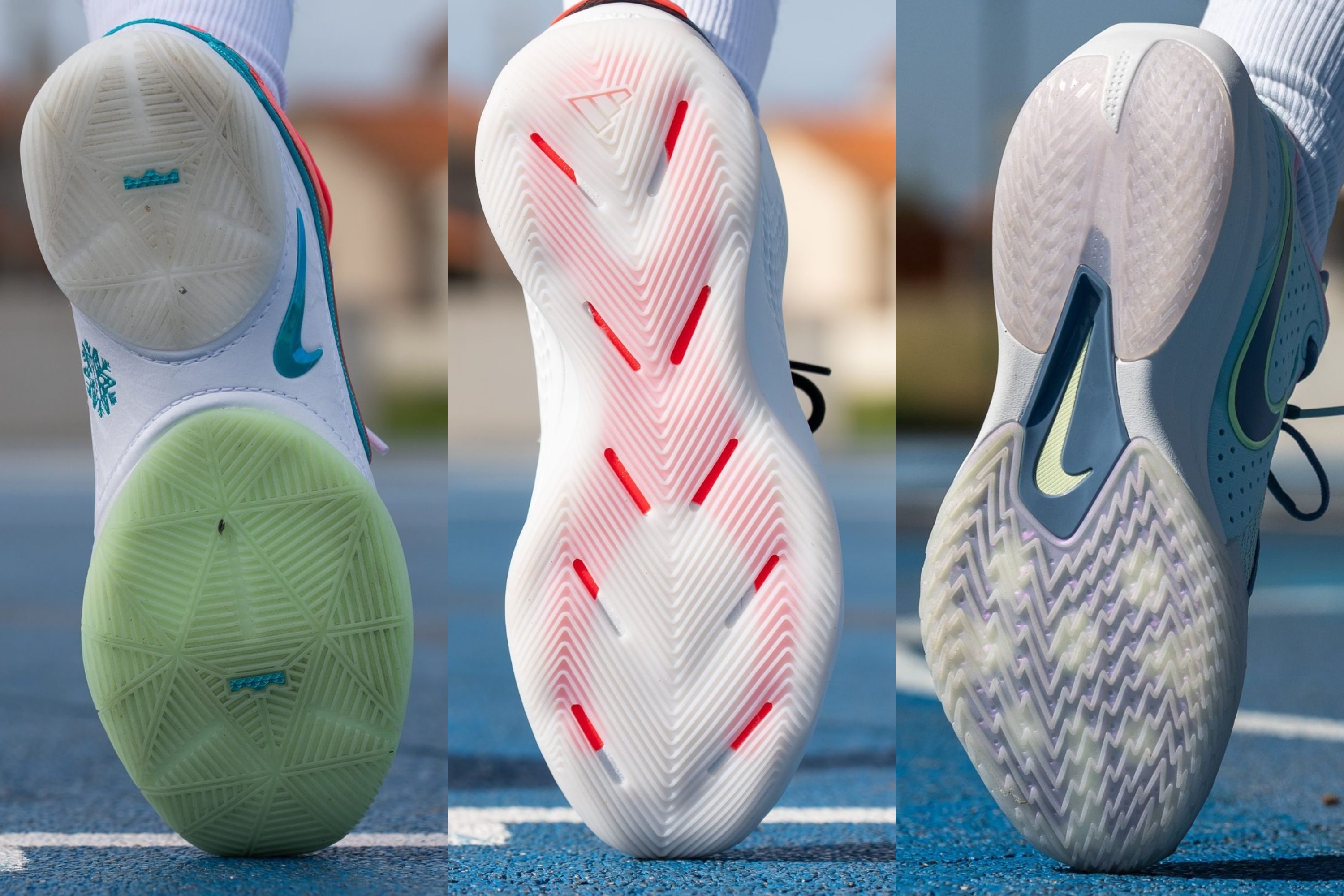
However, these are general observations, and there can be exceptions in each category. You can see which basketball shoes showed solid performance on dusty courts on our respective catalogue pages.
You can’t always control the quality of the court you play on, but you can follow some of these tips to feel more surefooted.
How to improve basketball shoe grip on the go
- Wiping: Use a moderately damp cloth or rug to remove dust during breaks and timeouts.
- Hair spray or hand sanitiser: Apply a small amount to boost grip short-term, but please note that the alcohol in these can damage shoe rubber in the long run.
- Branded sprays and traction mats: Can be pricey but are easier on the outsole rubber.
Be sure to check the condition of your shoe outsoles as well. They can be missing grip simply because the rubber has deteriorated too much. And in that case, you need to get a new pair.
Traction on outdoor courts
Being much harder on shoes than hardwood, the backtop calls for tougher and sturdier options.
You want to choose options with thicker and recessed treadlines as opposed to thinner and protruding ones.
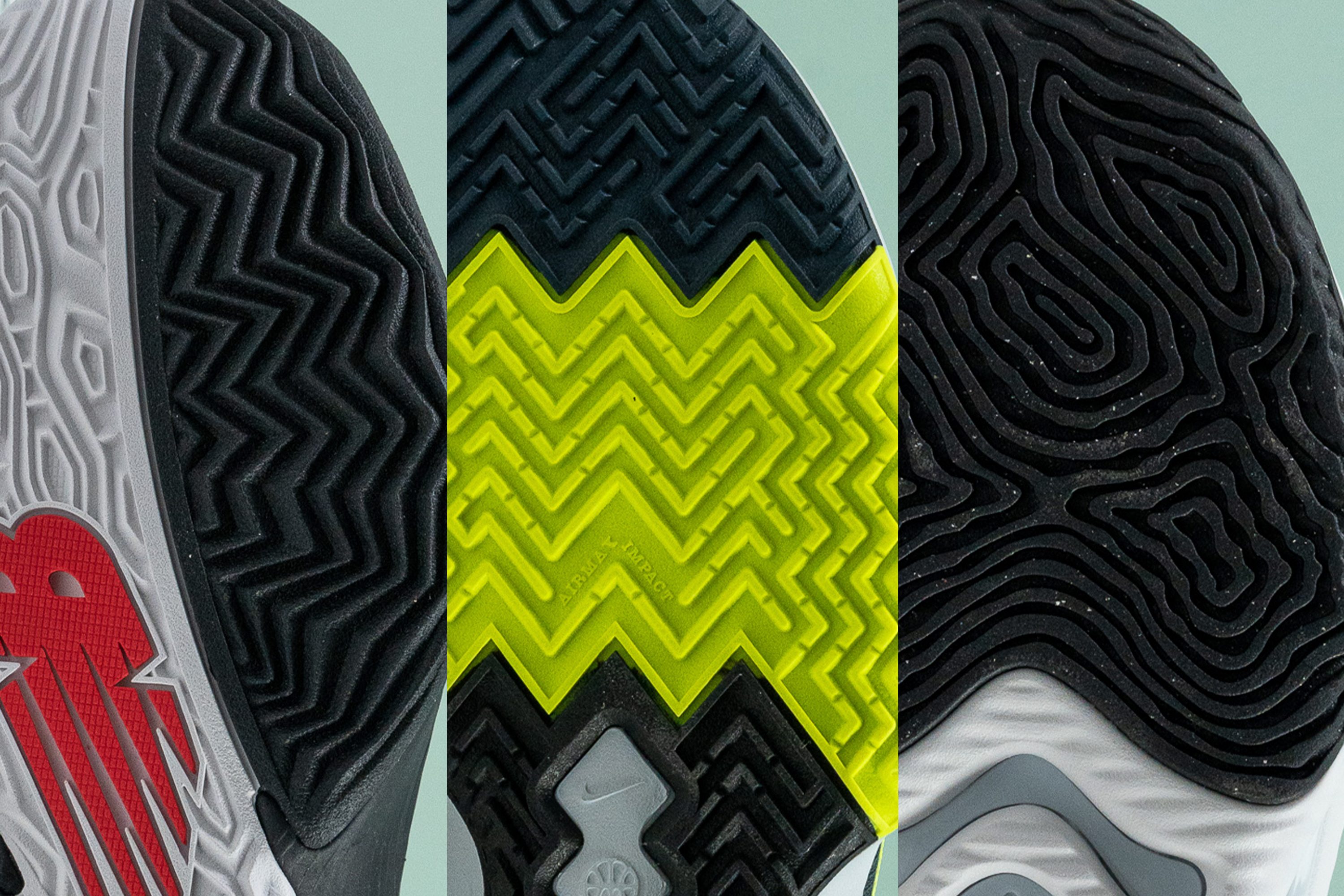
Outsole durability is crucial as well because the shoe loses grip as soon as its treads or rubber wear out. That’s why you want to see hard, thick, and wear-resistant outsoles on your streetball shoes.
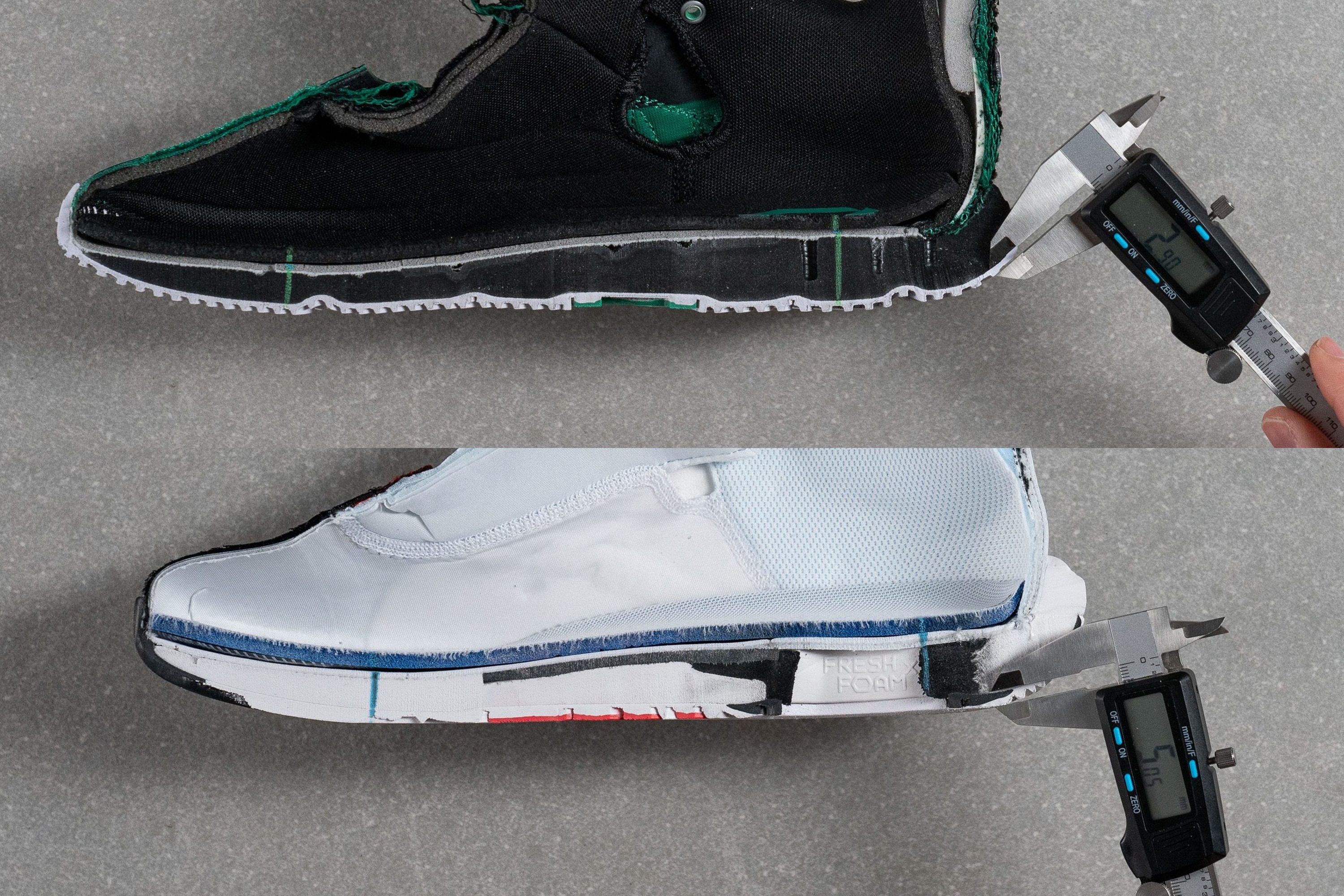
We cut each shoe in half and use a digital calliper to measure the thickness of its outsole rubber layer as precisely as possible. With the average measurements hovering around 4.0 mm, you want to see at least 3.5 mm of outsole thickness on a solid outdoor court shoe.
When it comes to wear resistance, we use a Dremel with a sandpaper tip to drill the shoe’s rubber at a high 10K RPM speed and consistent pressure of 2N for 18 seconds. Once done, we measure the depth of the newly formed dent. The smaller the number, the better the durability.
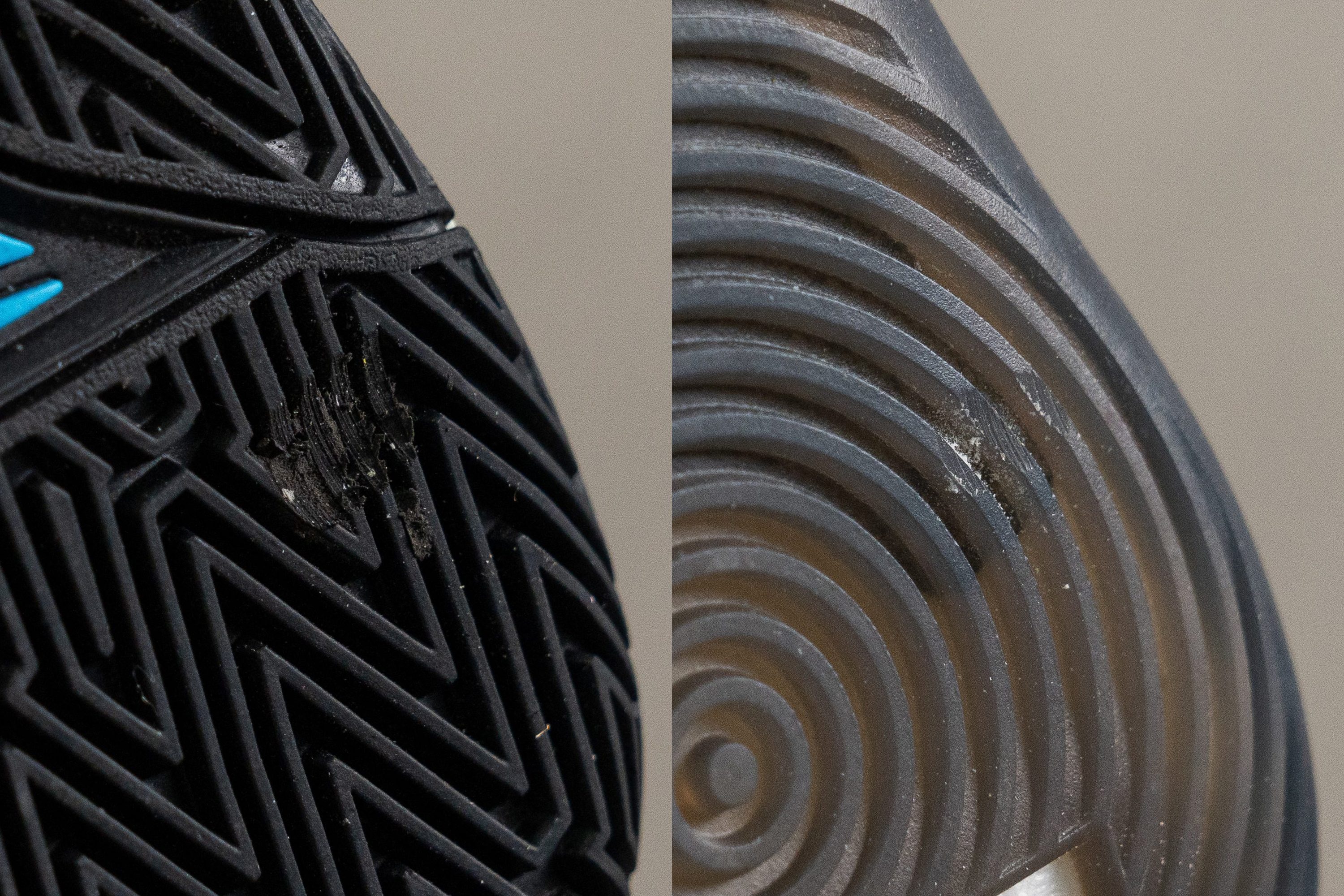
The following outdoor hoop shoes showed the best results in our traction and outsole durability tests.
If you’re wondering what other characteristics make a great blacktop hoop shoe, see our guide on the best shoes for outdoor basketball.

